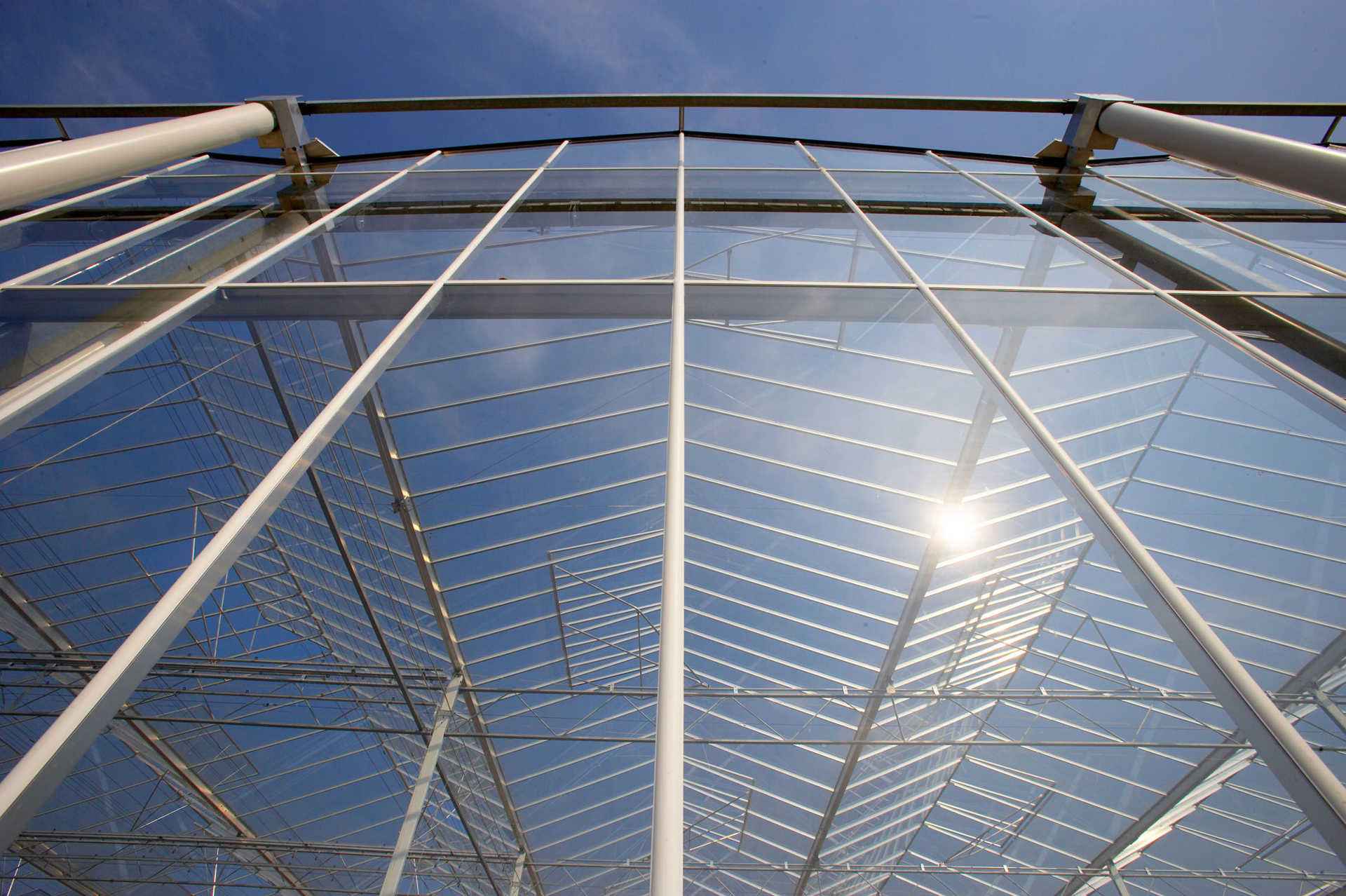Adiabatic Cooling

Short definition
In greenhouse operation, adiabatic cooling is the reduction of air sensible temperature by evaporating water into the airstream, converting sensible heat to latent heat while total air enthalpy remains essentially constant.
Expanded definition
=Adiabatic cooling relies on evaporating water into the airstream, absorbing heat and lowering the air's sensible temperature without changing the total enthalpy of the air. It is deployed in greenhouses through pad-and-fan cooling, high‑pressure misting or fogging, roof sprinkling, and indirect evaporative heat exchangers that condition outdoor air before or within the building envelope. The cooling performance depends on outdoor humidity, air movement, and the wet-bulb temperature; high humidity reduces the achievable temperature drop. Growers must coordinate adiabatic cooling with ventilation, CO2 management, and crop transpiration to avoid stomatal stress and excessive humidity that can favor disease. Synonyms and abbreviations: evaporative cooling, misting, fogging, pad-and-fan cooling, wet-bulb cooling, adiabatic humidification, direct evaporative cooling, indirect evaporative cooling, atomization.
In Greenhouse Context
Adiabatic cooling directly influences how a grower manages the corridor between cooling demand and humidity supply. By lowering the air temperature with water evaporation, intake air can be conditioned before it enters the canopy, reducing the load on mechanical cooling and enabling tighter control of the root zone and transpiration dynamics. The approach is especially valuable in hot, dry climates where outdoor dry-bulb temperatures rise while the outdoor wet-bulb temperature remains a practical limit. However, the method increases absolute humidity and often relative humidity inside the greenhouse, which can raise the risk of foliar and botrytis diseases if ventilation is insufficient or if air stratification occurs. To operate effectively, growers rely on accurate sensors for air temperature, humidity, and sometimes dewpoint, alongside psychrometric calculations to predict the resulting enthalpy changes. Pad surfaces, misting nozzles, and roof sprinklers must be kept clean and free of algae, and water quality is essential to avoid residue. Control strategies align with CO2 enrichment plans, since high humidity can alter stomatal behavior and photosynthetic rate. Automation often pairs adiabatic cooling with ventilation scheduling, real-time humidity targets, and variable-speed fans to maintain stable canopy temperature without over-humidification. The method also interacts with crop transpiration rates, irrigation timing, and energy budgeting, with the best results achieved by integrating cooling decisions into a holistic climate plan. But the operational benefits must be weighed against potential drawbacks: adiabatic cooling is less effective when outside air is already humid, and the latent load can complicate humidity management in densely planted houses. Maintenance routines for pads, misting lines, and heat exchangers are essential to sustain performance, and water quality affects scaling and microbial growth. Properly sized systems and setpoints require careful calculation using psychrometric charts and enthalpy concepts to avoid undercooling or over-humidification. In practice, adiabatic cooling can reduce energy use and demand on chiller plants, while enabling better CO2 use efficiency and potentially higher yields when combined with precise irrigation and canopy management. It remains a flexible tool for growers seeking low-cost cooling in large spaces while maintaining process control.
Examples and/or use cases
Pad-and-fan cooling in a southern greenhouse lowers intake air temperature while raising humidity to cushion peak heat; high-pressure misting during hot days reduces canopy temperature when air movement is maintained to carry away evaporated water; roof sprinkling on a semi-exposed greenhouse stabilizes roof surface temperature and surrounding air during sun hours; indirect evaporative cooling with an air-to-air heat exchanger provides cooling with minimal additional humidity inside the house; in humid subtropical operations, evaporative cooling is paired with controlled ventilation and CO2 enrichment to sustain growth without excessive disease risk; plant transpiration and irrigation schedules are aligned to exploit evaporative cooling during intense light, while pad maintenance and water treatment prevent algae and mineral buildup.
Relevance
Adiabatic cooling sits at the core of greenhouse psychrometrics and climate-control strategy. A solid understanding of humidity ratios, wet-bulb temperature, and latent versus sensible heat allows growers to size pads, fans, and nozzles and to predict cooling potential across outside conditions. Setpoints must balance humidity and canopy temperature targets, because excessive humidity can suppress transpiration or invite disease, while too-dry air can induce stomatal stress and reduced photosynthesis. Algorithms commonly adapt fan speed, misting cycles, and irrigation timing to hold a target canopy temperature within species-specific humidity bands. The benefits include energy savings, lower peak electrical demand, and improved CO2 use efficiency, but the trade-offs involve disease risk, water use, and ongoing maintenance. Sources — Books: Greenhouse Climate Control — Breuer, J.J.G.; Greenhouse Climate Control — Knies, P. Sources — Online: https://extension.psu.edu/psychrometric-chart-use/; https://msu-prod.dotcmscloud.com/floriculture/uploads/files/Section%20_3.pdf; https://ceac.arizona.edu/sites/default/files/asae_-_heating_ventilating_and_cooling_greenhouses.pdf; https://pdhonline.com/courses/m135/m135content.pdf